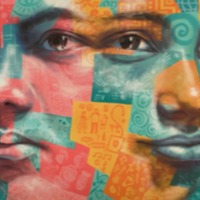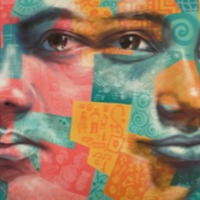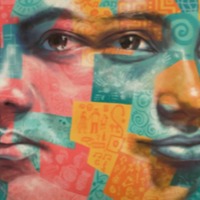
Pamela
There are an estimated 403,000 people living in modern slavery in the United States (GSI 2018). Sex trafficking exists throughout the country. Traffickers use violence, threats, lies, debt bondage and other forms of coercion to compel adults and children to engage in commercial sex acts against their will. The situations that sex trafficking victims face vary, many victims become romantically involved with someone who then forces them into prostitution. Others are lured with false promises of a job, and some are forced to sell sex by members of their own families. Victims of sex trafficking include both foreign nationals and US citizens, with women making up the majority of those trafficked for the purposes of commercial sexual exploitation. In 2015, the most reported venues/industries for sex trafficking included commercial-front brothels, hotel/motel-based trafficking, online advertisements with unknown locations, residential brothels, and street-based sex trafficking. Pamela* was trafficked for sex and child pornography at the age of five by a group of people her family were involved with.

Jerome
There are an estimated 403,000 people living in modern slavery in the United States (GSI 2018). Sex trafficking exists throughout the country. Traffickers use violence, threats, lies, debt bondage and other forms of coercion to compel adults and children to engage in commercial sex acts against their will. The situations that sex trafficking victims face vary, many victims become romantically involved with someone who then forces them into prostitution. Others are lured with false promises of a job, and some are forced to sell sex by members of their own families. Victims of sex trafficking include both foreign nationals and US citizens, with women making up the majority of those trafficked for the purposes of commercial sexual exploitation. In 2015, the most reported venues/industries for sex trafficking included commercial-front brothels, hotel/motel-based trafficking, online advertisements with unknown locations, residential brothels, and street-based sex trafficking. Jerome was trafficked into child pornography and commercial sexual exploitation by his mother’s boyfriend at the age of five.

Brooke Axtell
There are an estimated 403,000 people living in modern slavery in the United States (GSI 2018). Sex trafficking exists throughout the country. Traffickers use violence, threats, lies, debt bondage and other forms of coercion to compel adults and children to engage in commercial sex acts against their will. The situations that sex trafficking victims face vary, many victims become romantically involved with someone who then forces them into prostitution. Others are lured with false promises of a job, and some are forced to sell sex by members of their own families. Victims of sex trafficking include both foreign nationals and US citizens, with women making up the majority of those trafficked for the purposes of commercial sexual exploitation. In 2015, the most reported venues/industries for sex trafficking included commercial-front brothels, hotel/motel-based trafficking, online advertisements with unknown locations, residential brothels, and street-based sex trafficking. Brooke Axtell was seven years old when she was trafficked for sex by her nanny. Her mother was in hospital and her father travelled for work. She was taken to houses and hotels and sold to strange men. She was forced into pornography with adults and other children. The trafficking finally ended when her mum came out of hospital and fired the nanny, but Brooke’s trauma followed her into adulthood.

Jewell
There are an estimated 403,000 people living in modern slavery in the United States (GSI 2018). Sex trafficking exists throughout the country. Traffickers use violence, threats, lies, debt bondage and other forms of coercion to compel adults and children to engage in commercial sex acts against their will. The situations that sex trafficking victims face vary, many victims become romantically involved with someone who then forces them into prostitution. Others are lured with false promises of a job, and some are forced to sell sex by members of their own families. Victims of sex trafficking include both foreign nationals and US citizens, with women making up the majority of those trafficked for the purposes of commercial sexual exploitation. In 2015, the most reported venues/industries for sex trafficking included commercial-front brothels, hotel/motel-based trafficking, online advertisements with unknown locations, residential brothels, and street-based sex trafficking. Jewell Baraka was exploited for three years in prostitution and three years in pornography in the 1980s and 1990s, from age 11 to 17, in Portland, Oregon. Her narrative is from an interview with Francine Sporenda for the Révolution Féministe website, originally published in French and then in English by Nordic Model Now!, a UK secular, feminist, grassroots women’s group campaigning for the abolition of prostitution and related practices.

Jessa
There are an estimated 17,000 people living in conditions of slavery in Canada (GSI 2018). Both Canadian and foreign citizens are exploited in forced labour and sex trafficking. Forced labour affects migrant workers under ‘low-skilled’ temporary visa streams including the low-wage and primary agricultural streams. These workers are often in restaurants, hotels, agriculture, food preparation, construction or domestic work. Sexual exploitation of Canadian citizens is the most common form of slavery detected by authorities in the country, with 93% of sex trafficking victims being Canadian. As a child Jessa was sexually abused by family members and given to child pornographers. She tells of how this then led to the pornographer selling her body to men and other pimps. Jessa was trafficked across Canada, the US and other countries, forced to provide sexual services to men and women. At the age of 21 Jessa was approached by a woman working with survivors of trafficking. This began Jessa’s journey to freedom.

Suzzan Blac
The UK National Crime Agency estimates 3,309 potential victims of human trafficking came into contact with the State or an NGO in 2014. The latest government statistics derived from the UK National Referral Mechanism in 2014 reveal 2,340 potential victims of trafficking from 96 countries of origin, of whom 61 percent were female and 29 percent were children. Of those identified through the NRM, the majority were adults classified as victims of sexual exploitation followed by adults exploited in the domestic service sector and other types of labour exploitation. While a number of victims are trafficked from other countries such as Albania, Romania and Nigeria into the UK, UK residents are also vulnerable to commercial sexual exploitation. Suzzan Blac was born in 1960 in Birmingham to a dysfunctional family in which she experienced physical, emotional and sexual abuse. In 1976 she travelled to London for what she thought was a job interview, after meeting with her employer and having her mother sign a contract and consent form Suzzan thought she would begin a new life in London. However, she was taken to an old hotel building, raped by her employer and multiple other men before being forced, along with other young girls, to perform sexually in front of both a video and still camera. Subjected daily to threats, beatings and rape, Suzzan learned how to numb her mind. At the age of 16 Suzzan was able to escape from her traffickers with the help of one of the men involved in the trafficking ring. However, while she may have been physically free, she felt her mind was still trapped. At the age of 18 filled with guilt, shame and self-blame she sought medical help but was not given the support she needed by doctors who either gave her drugs to numb her feelings or abused her further. It wasn’t until the birth of her daughter at the age of 28 that Suzzan says she began to recognise her past abuse and the understanding of true motherhood. During the years 2000-2004 she was compelled to paint 42 images about her abuse in order to help process her pain and trauma into something tangible. Suzzan did not reveal these paintings for a further 10 years, finally deciding in 2011 that being a survivor was not enough, she wanted to be a voice for other survivors. Suzzan’s work is now exhibited around the world and she continues to be a voice for survivors, using her blog on The Violence of Pornography and her art in seminars to train social workers on child sexual abuse and trafficking.